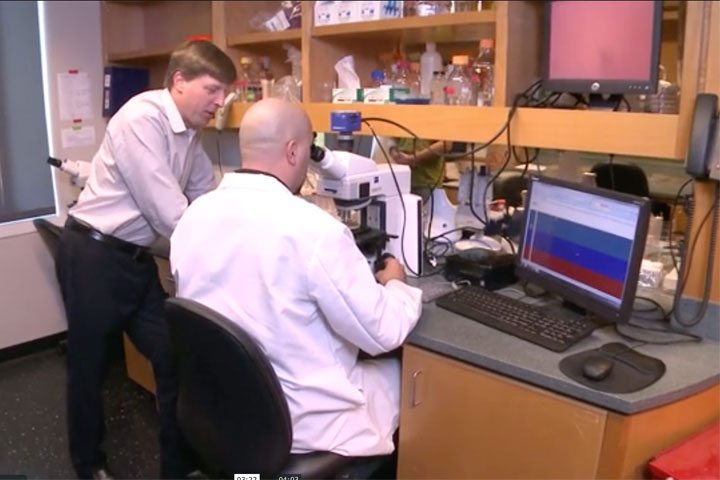Perched in an unlikely place—atop the crest of a hill overlooking a freeway in Novato, California, just north of San Francisco—is a brain trust working to unlock the key to our futures. It’s easy to miss the turnoff to the spot, marked only by a diminutive highway sign: Buck Institute for Research on Aging. But after ascending the starkly vegetated rise, there’s no mistaking that you’ve arrived at a place of gravitas.
Working inside are more than 100 scientists from various countries and disciplines who share a singular concern: while human lifespans have increased over the years, our healthspans have not. So while more people live into their 80s, 90s, and even 100s, many are forced to do it in the cruelest way: with their final years spent wracked in pain, tortured by diseases and aggressive medical treatments, or fogged over by clouds of dementia. “Our goal is to make it possible for people to age, disease-free, then simply drop dead,” explained a docent during one of the recent weekly public tours.
The Buck Institute and the iconic structure in which it’s housed both have storied pasts. Acclaimed architect I.M. Pei reportedly begged for the commission to design the building once he heard of the Buck’s noble mission. “We couldn’t have afforded him otherwise,” the docent noted.
Funding the Future of Geroscience
To outsiders looking in, money wouldn’t seem to pose much of a block for The Buck. Seeds for the Institute were planted back in 1975, when California philanthropist Beryl Hamilton Buck died, leaving most of her estate in a trust, then valued at $10 to $12 million. She also left instructions for her trustees to spend the money “to extend help toward the problems of the aged, not only the indigent, but those afflicted by accident and illness later in life” in her home county of Marin, north of San Francisco.
That geographical restriction rankled officials in neighboring counties who wanted a share of the largess and sued to get it. By the time the case was settled in 1986 after a six-month trial, the estate’s value had swelled to $262 million—courtesy of the sale of some of the trust’s oil stocks and the healthy accumulation of interest during the delay.
The Buck Institute on Aging, the world’s first research center focused exclusively on geroscience, the relationship between disease and growing older, was awarded 15{d0e74b8a3596e4326b45924d39792f257a1f9983beed4201831d386befd3d18e} of the net income forever. (The Buck Trust is now reportedly worth well over $700 million, generating an annual income for the Institute of about $6 million.) Its first action was to purchase 488 undeveloped acres for its scientists and laboratories. Construction was held up for nearly a decade as animal rights activists protested. The Buck Institute finally opened its doors in August 1999.
Scientists Working Together to Conquer Aging
Its steel frame and concrete building, faced in stark white travertine stone, bears many of architect Pei’s signature touches: floating staircases, geometric angles throughout, and an atrium distinguished by his favored olive trees and a 75-foot skylight, similar to the Louvre pyramid in Paris, which he also designed.
Inside, the open offices and wide hallways are designed to foster the theory that the best work gets done by working collectively and informally, by colleagues bumping into one another and sharing their passions for their current pet projects.
The team of scientists at the Buck Institute hails from all over the world, with esoteric-sounding specialties—including cellular bioenergetics, stress biology, epigenetics, regenerative medicine, neurodegeneration, molecular physiology, and bioinformatics. There are currently 19 faculty members, each of whom supervises a team of scientists in one of the laboratories strategically built in a warren underground to stanch the effects of the sun. Their research is confined to experiments on yeast, nematode worms, fruit flies, mice, and naked mole rats—all chosen for having cell organisms similar to humans, the eventual hopeful benefactors.
Recent Discoveries
Just a few of the recent hopeful Buck research discoveries:
- Regular doses of the common drug ibuprofen were found to extend the lifespans of worms and fruit flies by an average of 15{d0e74b8a3596e4326b45924d39792f257a1f9983beed4201831d386befd3d18e}.
- A cholesterol-carrying lipid, the leading genetic risk factor for Alzheimer’s disease, was isolated—opening the way to developing a drug to prevent the development of the disease in those who carry it.
- A protein secreted in immune cells in mice greatly enhanced the integration of stem cells, aiding regeneration of cells in older and diseased tissues.
- A broccoli-related component injected in mice was found to successfully treat macular degeneration, the leading cause of loss of vision in humans.
The Buck Institute also hosts a number of scientific seminars throughout the year, summarizing current research on topics such as “Metabolic Regulation of Learning” and “The Importance of Aging in Neurodegenerative Processes.”
And when not busy behind their microscopes and petri dishes working on lengthening human healthspans, the Buck’s geroscientists are ambassadors for their cause. They conduct separate summer programs for high school and undergraduate students aimed at “training the next generation of researchers on aging.”
And they make frequent forays to senior housing centers, giving plainspoken talks on topics they’re researching. But they don’t just focus on neurons and synaptic connections. The takeaway from a recent lecture on “Lowering the Risk for Alzheimer’s Disease” by Patricia Spillman, a senior staff scientist at the Buck: “Use the body and mind together as much as possible. Learn to dance!”
Photo Credit: The Buck Institute for Research on Aging
